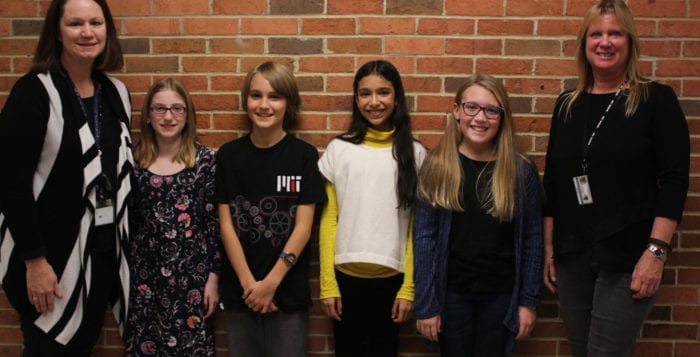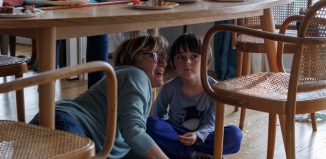Huntington students find success with robotics lessons

Huntington students taught the community a thing or two about computer science and coding at a board of education meeting Dec. 12.
Sixth-grader Sarah Crowin, along with fifth-graders Samantha McGloin, Ben Edgar McNerney and Uma Shtrom, showed those in attendance how they were able to make “math move” and come to life in creating their own mazes and games.
They explained how this new passion has helped them in other areas.
McGloin, a student at Jack Abrams STEM Magnet School, said coding helped her become a better problem solver.
“When you’re coding, it’s all trial and error,” she said at the meeting. “If something doesn’t work, there’s no pop-up explaining what to do … you have to know your lines of code and what you wrote to see what you did wrong and learn from it. It helps with perseverance because you have to work on something and there’s no such thing as overnight success.”
She said coding has taught her to put all of her effort into something — otherwise it won’t work out the way you want it to.
Shtrom, also a student at Jack Abrams, said coding changed the way she thinks.
“When I see video games like Minecraft or Temple Run, I think about the coding conditions behind the game,” she said. “Coding had also helped me to better understand math concepts … like grid coordinates … x and y coordinates … and angles.”
Back in October, students at Woodhull Intermediate School and the STEM Magnet School started using the platform called kidOYO, or Kid On Your Own, in the classroom to create coding scripts and explore learning outcomes in the fields of computer science, engineering and entrepreneurship education.
This program, which Huntington has implemented in grades kindergarten through eighth, encourages students to demonstrate knowledge and problem solving skills through various programming tools.
Students of all ages within the district are able to access kidOYO from home as well as school, and so far they said they’ve been excited to learn and utilize this new language of code.
“It’s wonderful to see students engaged in this,” Christine Lofaro, a Huntington Response to Intervention math teacher, and one of the facilitators of the program said.
She said even though not all the students participating in the program are necessarily heavy academic students in terms of math and science, they love to do this and it’s never a chore to get them involved.
“I was in a kindergarten class on Friday and was thinking, “How am I going to do this with kindergarten students?” she said. “They were totally in it, totally in the game and excited, right from the get go.”
She and fellow Huntington RTI math teacher Susan Llanes had the opportunity to attend the “kidOYO Summer Experience” at Stony Brook University for three days in July and while there, they trained alongside computer science instructors and learned a lot about the benefits of the program, especially for young students.
They immediately brainstormed how they were going to bring this back to their school.
Lofaro and Llanes emailed principals and the district’s Director of Elementary Mathematics Marybeth Robinette about how to roll this out as soon as school was back in session in the fall.
Robinette said every 21st century student should have a chance to learn about algorithms, how to make an app, and learn how the internet works, just as they should know what photosynthesis and H2O are.
“Right now, there’s no expectation in our schools that students should even have a basic understanding of these concepts, even though they’re driving a large part of our society,” said Robinette.
The director of elementary mathematics said computer science is foundational and affects every field in residents’ lives. Whether it’s navigation systems on the road or computing breakthroughs in health care, every single day ,the trend of coding is growing in every single industry.
She explained that right now computing jobs are the number one source of new wages in the U.S.
“There are more than 500,000 job openings [in this field], but we’re not graduating kids from college with computer science degrees,” Robinette said. “One of the reasons is that kids don’t really know how computers work and think it’s really difficult and scary. But through kidOYO … we’re showing that all kids can participate in this.”






